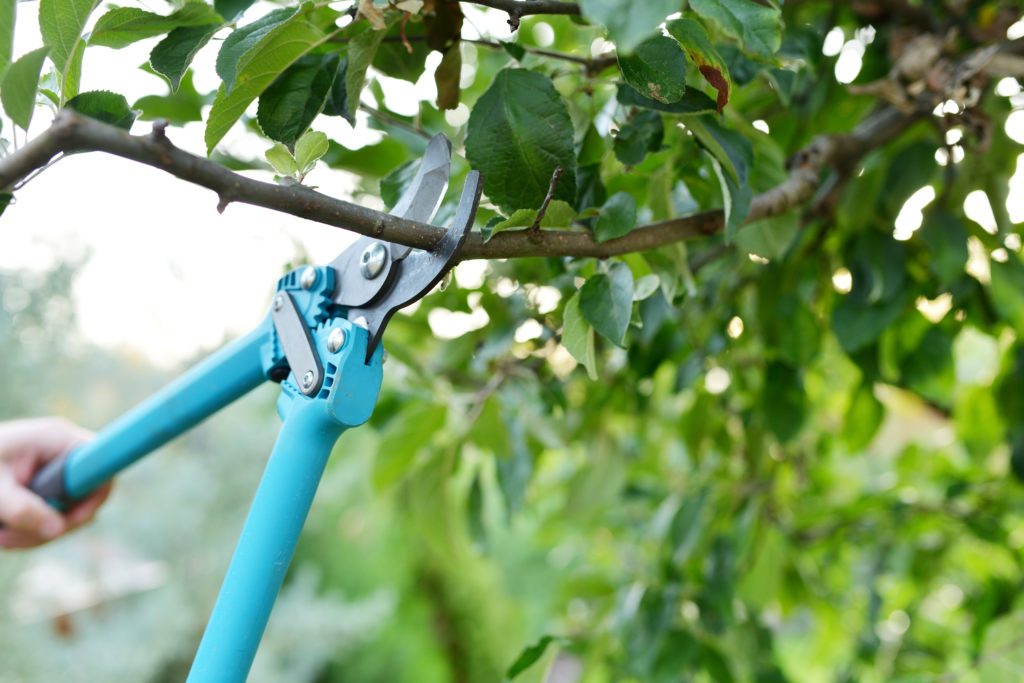
Pruning Hacks
Pruning Hacks
It’s a good thing when a plant is healthy enough to grow quickly, but over time, your plants can start to get unruly. Think about the last person you met who had really, REALLY nice hair. Even the healthiest, shiniest hair needs an occasional haircut to keep it looking its best! Plants are the same way, and that’s why it’s important to prune them regularly.
If you’ve never pruned before, you might be a little apprehensive about going all Edward Scissorhands on your beloved rose bushes. The good news is that pruning doesn’t have to involve elaborate shrub sculptures, and proper technique is easy to learn. Check out our top pruning hacks to help you hack off the old, and make room for the new!
Pruning 101
Pruning is one of the oldest gardening tricks in the book, but we often get questions from beginner gardeners asking why it’s important.

Focus energy. While your plants’ spent blooms, dead leaves, and unhealthy-looking parts may be easy for you to spot, your plant doesn’t recognize this as easily – remember, your plant doesn’t have eyes! Plants will continue spending precious energy to keep these done-for bits alive unless you remove them, which lets your plant put its resources to better use.
Staying safe. A low-hanging stray branch can become a tripping hazard, and stray branches further up the trunk can become a head-hitting hazard. Plus, trees left unpruned can start to grow too close your house – that can be really bad news during a wicked storm.
Shape up. Plant shaping is the difference between a manicured garden and a yard that looks abandoned and overgrown. Simply pruning back parts of the plant that are growing out of place can help you “train” your plant to grow in the shape you want.

Tools of the Trim
Not all pruning tools are created equal! Just as you wouldn’t use a men’s shaver to cut a long women’s haircut, it’s important to match your pruning tools to the right job.
Branches & thick stems call for well-sharpened garden shears of appropriate size.
Flower & tender stems need sharp garden scissors.
All tools should be disinfected between each use. Shears and scissors can transmit diseases and bacteria between plants, so make sure to snip safely!

Pruning Tomato Plants
Tomato plants can grow pretty vigorously and often need to be pruned during the season. To keep them tidy, try these tips.
So long, ‘suckers’! Suckers are shoots that grow off the side of a plant and, if left alone, they will try to grow into their own tomato plants. This might sound like a highway to more tomatoes, but usually what happens is the shoots “suck” energy away from the plant and take away from the overall quality and yield. Keep tomato plants pruned down to only 4 “suckers”, and clip the ones nearest to the soil first.
Missouri loves company. The Missouri method of tomato plant pruning involves pruning the extra suckers just past the leaves closest to the main stem. This lets the tomato plant benefit from the photosynthesis action of those extra leaves, without having to take care of the entire shoot.

Pruning Shrubs & Bushes
If you learn how to prune nothing else, you should at least learn how to prune shrubs and bushes. Keep common shrubs in shape with these hacks.
Stray away. Stray branches from rose bushes, lilac bushes, and rhododendrons can be hazardous – especially the ones far below eye-level. Prune back low-hanging branches first and work your way up the plant to even out the shape.nUse a-cute angle. To prune off dead branches and flowers, cut the area back on live wood and trim at a 45-degree angle.
Pruning Fruit-Bearing and Ornamental Trees
Mature trees truly enhance the look of a yard, but an unruly one can be a serious safety hazard – especially for homes with younger kids who love to climb. Here’s how to keep your trees safely spick and span.
Dump the 3 “D”s. Any material that’s damaged, diseased, and dead is doing your tree no favours. Chop it off and throw it away. Do not burn or compost diseases tree parts.
Thin to let air in. Heavy and dense tree canopies should be thinned out to promote the flow of oxygen through the branches. You should have about 6”-12” of space between each branch.
Prevent collisions. When thinning the canopy, try to zero-in on branches that appear to be growing toward other branches and chop those off first.
Keep it well-groomed. Cut any branches short that look out of place, including any “suckers” growing out of the base of the tree.
A little off the top. Buy or borrow a tall ladder and enlist a partner to help you trim branches off the top of the tree. This encourages the lower and middle branches to grow more productive, keeping the tree stable and any fruit easier to reach!
With a pair of shears in one hand, a pair of scissors in the other, and these tips in the ol’ noggin, you’ll be pruning like a pro. For plants that aren’t on this list, or for information on when to prune during the year, reach out to our Daymakers right here at Heeman’s for more “shear genius” advice.




